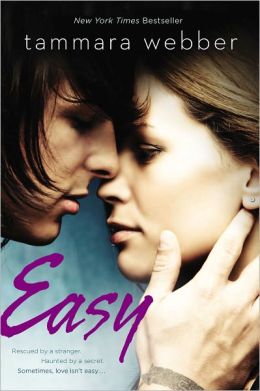My post of August 18, titled Why Do Kids' Books Stay Perennially White? caused such a positive stir, I decided to look closer to home--my publishing house, Guardian Angel Publishing.
 |
| Margot Finke, Artist and Author |
Happily, this house makes a point of showcasing protagonists of color. This post then will feature books and authors who have and continue to do just that. It is my hope you'll take a look at them, see the real value, and obtain some for the youngsters in your life.
In the words of Guardian Angel publisher, Lynda S. Burch:
Guardian Angel is proud to offer a mixed variety of children's books for all ethnicities and also multiple language platforms. We have been aware of the needs for a broader base of stories for kids from around the globe and in our own backyards and have extended our efforts to produce quality children's books that kids can identify with-no matter their skin color or ethnicity. Many of our books include multicultural characters that gently teach acceptance for all children of the world. We believe in cultural diversity is a literary portal from which we can embrace our global community with our books.
 The books are in the authors' alphabetical order. The links for each book will lead you to its page at Guardian Angel Publishing where all information about it can be found.
The books are in the authors' alphabetical order. The links for each book will lead you to its page at Guardian Angel Publishing where all information about it can be found.
Bear Cahill
Even if your friends have different mothers and fathers, as children of
God, we're all brothers and sisters. As we learn from the Bible, God
adopted us all as His children and to find our brothers and sisters, we
just need to look around!
 Penelope Cole
Penelope Cole
Magical Mea
Matthew’s
little sister Mea is a trickster. Mea got her magic when Matthew lost
his. Matt tries to guide Mea to use her magic for good. But the more
Matt tries to mentor Mea, the more she wants to "do it her way.” Matt
worries Mea might get into trouble.
Kevin Coller
 We’ve sewn a flowing flag of glory, and created a
dialogue of resilience: one where seeds of hope are planted, and the
fruit is harvested and shared by all. Believing one person can make a
difference to the many is the direction of this story...the direction
to a better world.
We’ve sewn a flowing flag of glory, and created a
dialogue of resilience: one where seeds of hope are planted, and the
fruit is harvested and shared by all. Believing one person can make a
difference to the many is the direction of this story...the direction
to a better world.
Donna McDine
The Golden Pathway
http://www.guardianangelpublishing.com/pathway.htm
 Raised in a
hostile environment where abuse occurs daily, David attempts to
break the mold and befriends the slave, Jenkins, owned by his Pa.
Fighting against extraordinary times and beliefs, David leads
Jenkins to freedom with no regard for his own safety and possible
consequences dealt out by his Pa
Raised in a
hostile environment where abuse occurs daily, David attempts to
break the mold and befriends the slave, Jenkins, owned by his Pa.
Fighting against extraordinary times and beliefs, David leads
Jenkins to freedom with no regard for his own safety and possible
consequences dealt out by his Pa
Margot Finke
Takoni and Claude
 Taconi, a young aboriginal boy living on Coorparoo Cattle Station, in outback Australia, fears the unknown. His upcoming Man Ceremony, Dreamtime Spirits, and his Dad's change of job are just three of the unknowns he must tackle. Claude, his chatty cockatoo, offers wise one-liners. Yet Taconi must discover courage and insight for himself.
Taconi, a young aboriginal boy living on Coorparoo Cattle Station, in outback Australia, fears the unknown. His upcoming Man Ceremony, Dreamtime Spirits, and his Dad's change of job are just three of the unknowns he must tackle. Claude, his chatty cockatoo, offers wise one-liners. Yet Taconi must discover courage and insight for himself.

Nicole Weaver
My Sister is My Best Friend
Sisters are very special: Meet two sisters that do everything together. This delightful story transcends all cultural barriers. It will warm the heart of little girls from all over the world.
Las hermanas son muy especiales: Conozca a dos hermanas que hacen todo juntas. Esta bella historia trasciende todas las barreras culturales. Tocará el corazón de todas las niñas del mundo.
Les sœurs sont très spéciales : Rencontrez deux sœurs qui font tout ensemble. Cette jolie histoire transcende toutes les barrières culturelles. L’histoire va réchauffer le cœur des petites filles dans le monde entier.
 Vishpriya
Vishpriya
Tales from India: Character Counts! RESPECT
Throughout my growing years, character formation made a distinct mark. Through numerous stories and daily experience, my parents, uncles, aunts, grandparents continuously re-iterated the importance of good character and how it helps form the person you are in future. In this tale Viswas Ram learns about respect.
Emma comes from three generations of Air Force pilots and misses her father when he travels. Her best friend Adam tries to cheer her up. Emma’s great grandfather, one of the first African American pilots during World War II, shares his life story with Emma and Adam and helps them appreciate the spirit of service.
Nancy Stewart
Sea Turtle Summer
Bella and Britt think living by the beach is the coolest thing ever. When they discover an unprotected sea turtle's nest, they go into action! Will their bravery and quick thinking save the baby turtles? How can they do it, and what lessons will they learn about themselves? The book also contains kid appealing sea turtle facts.










.jpg)




.jpg)










